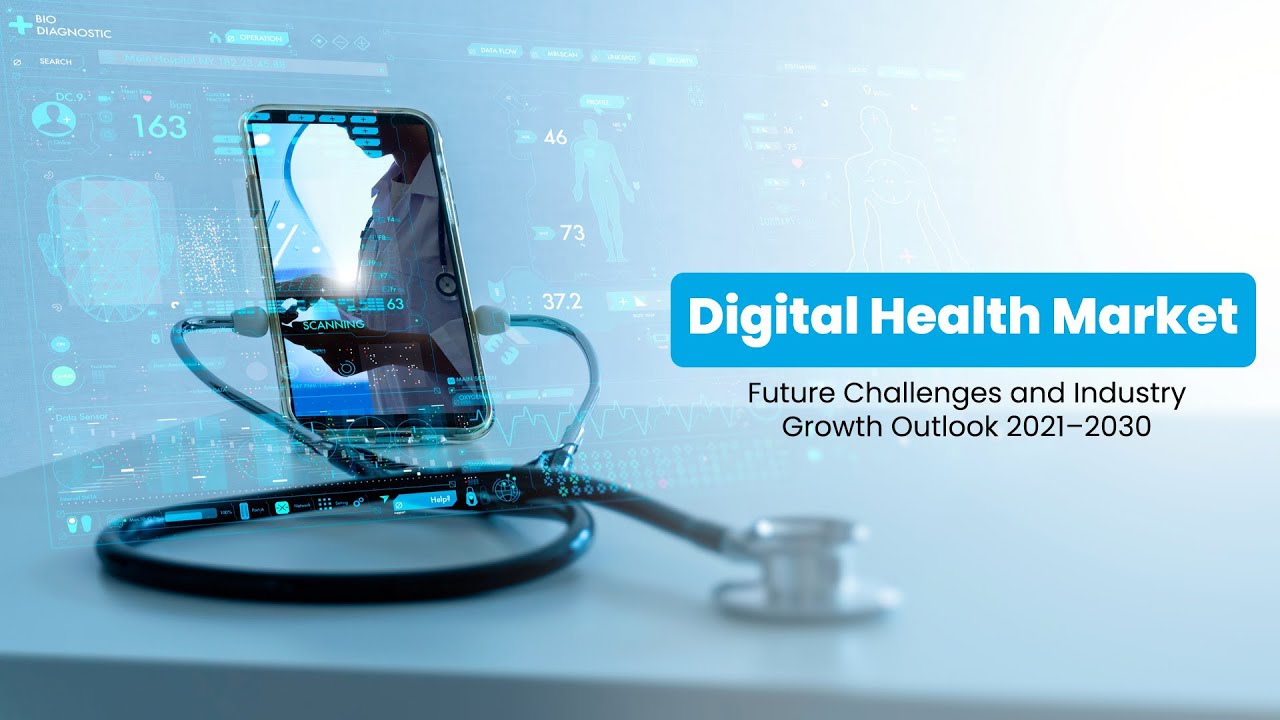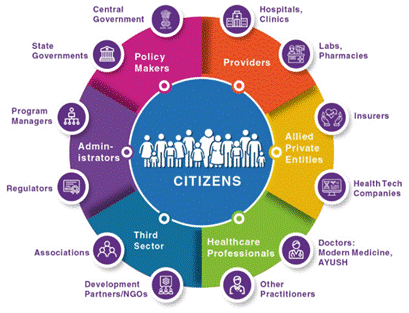- Courses
- GS Full Course 1 Year
- GS Full Course 2 Year
- GS Full Course 3 Year
- GS Full Course Till Selection
- MEP (Mains Enrichment Programme) Data, Facts
- Essay Target – 150+ Marks
- Online Program
- GS Recorded Course
- NCERT- First Ladder
- Polity
- Geography
- Economy
- Ancient, Medieval and Art & Culture AMAC
- Modern India, Post Independence & World History
- Environment
- Governance
- Science & Technology
- International Relations and Internal Security
- Disaster Management
- Ethics
- Current Affairs
- Indian Society and Social Issue
- CSAT
- 5 LAYERED ARJUNA Mentorship
- Public Administration Optional
- ABOUT US
- OUR TOPPERS
- TEST SERIES
- FREE STUDY MATERIAL
- VIDEOS
- CONTACT US
India’s Digital Health
India’s Digital Health

- Recently, The World Economic Forum (WEF) published an article named ‘India Can Be a Global Pathfinder in Digital Health’.
- It highlighted India’s potential to lead in developing a global digital healthcare system.
- It also mentioned that India is making significant steps in digital health by using technologies such as telemedicine, electronic health records (EHRs), & AI-driven diagnostics to bridge the healthcare gap between urban and rural areas.
- India’s progress is being seen as a model for other developing countries, especially in building resilient healthcare systems.
What is Digital Health as per WHO ?
As per World Health Organisation (WHO), digital health is the field of knowledge and practices associated with the development and use of digital technologies to improve health.
Components of Digital Health:
- Digital Health Applications:
- EHRs (Electronic Health Records): Digital systems to maintain patient records.
- Telemedicine: Remote healthcare consultations via digital platforms.
- Wearable Devices: Devices to monitor health metrics like heart rate, blood pressure, and activity levels.
- Health Information Systems: Platforms for managing and exchanging health data across institutions.
- Digital Health Technologies:
- Artificial Intelligence (AI): Used for diagnostics and predictive analytics.
- Big Data: Analyzing large datasets to identify health trends and patient patterns.
- Internet of Medical Things (IoMT): A network of interconnected medical devices that communicate with each other to monitor patient health.
- Augmented Reality (AR): Used in medical training and surgery planning.
Prominent Features of India’s Digital Healthcare System (As Highlighted by WEF)

- Interoperability and Standardization:
- Ensuring smooth data exchange across different systems and stakeholders.
- Examples:
- Ayushman Bharat Digital Mission (ABDM): Aims to create a national digital health ecosystem using Unique Health IDs for patients.
- CoWIN Platform: Managed over 2 billion doses of the COVID-19 vaccine and set a global benchmark for digital health systems.
- Other Platforms:
- U-Win Portal for COVID-19 vaccination.
- Aarogya Setu App for contact tracing.
- e-Hospital application for online healthcare services.
- Public-Private Collaboration:
- Promoting partnerships between the public and private sectors to improve healthcare delivery.
- National Digital Health Mission (NDHM):
- The Health Facility Register (HFR) standardizes data exchange between private and public healthcare facilities.
- The Health Facility Register (HFR) standardizes data exchange between private and public healthcare facilities.
- Affordability and Accessibility:
- Digital tools are being used to make healthcare more inclusive and accessible, particularly in rural areas.
- Examples:
- e-Sanjeevani Telemedicine Service: Provides telemedicine services to remote areas, offering millions of consultations.
- National Tele Mental Health Programme (Tele MANAS): Provides mental health support across the country via digital means.
Concerns Associated with Digital Healthcare
|
Concern |
Solution |
|
|
Standardization Issues with Digital Health Cards |
- Create a unified platform for all health cards (e.g., ESIC, PM-JAY). - Develop interoperable systems for seamless data migration between different health card systems. |
|
|
Limited Digital Literacy & Access in Rural Areas |
- Invest in digital literacy programs, especially in rural and underserved areas. - Increase access to smartphones, internet, and digital healthcare tools via government programs or subsidies. |
|
|
30% of healthcare institutions in India suffer from poor data connectivity, impacting healthcare delivery |
- Improve infrastructure and invest in better data connectivity solutions for healthcare institutions. - Develop offline solutions or hybrid models that work well even with poor connectivity. |
|
|
Cybersecurity Risks and Unauthorized Data Access |
- Strengthen cybersecurity frameworks, protocols, and monitoring systems within healthcare systems. - Regularly update and audit data security measures to prevent breaches. |
|
|
AI Bias in Healthcare Example: In the US, AI systems in healthcare prioritized healthier white patients over sicker black patients due to the way AI was trained on cost-based data. |
- Ensure AI models are trained on diverse and representative datasets. - Implement fairness and transparency audits for AI systems used in healthcare. - Include mechanisms for continuous monitoring and adjustment of AI algorithms to ensure equity in healthcare. |
|
|
Example: 2022 AIIMS Cyber Attack Exposing Data of 4 Crore Patients |
- Enhance backup systems and response protocols for cyber-attacks. - Adopt end-to-end encryption and multi-factor authentication for access to sensitive health data. |
|
|
Also Read |
|
| FREE NIOS Books | |




